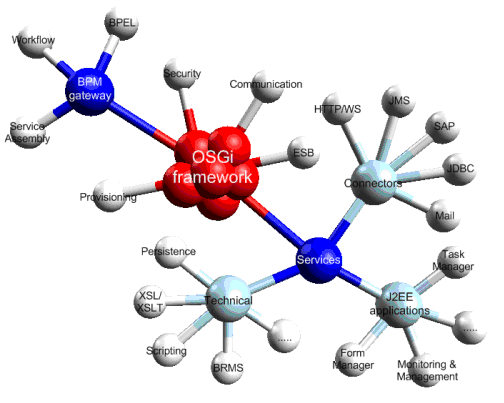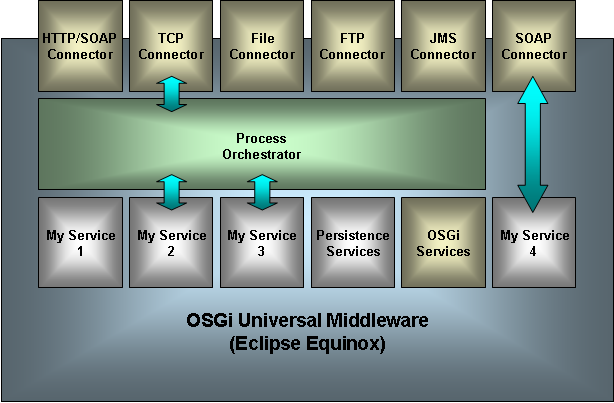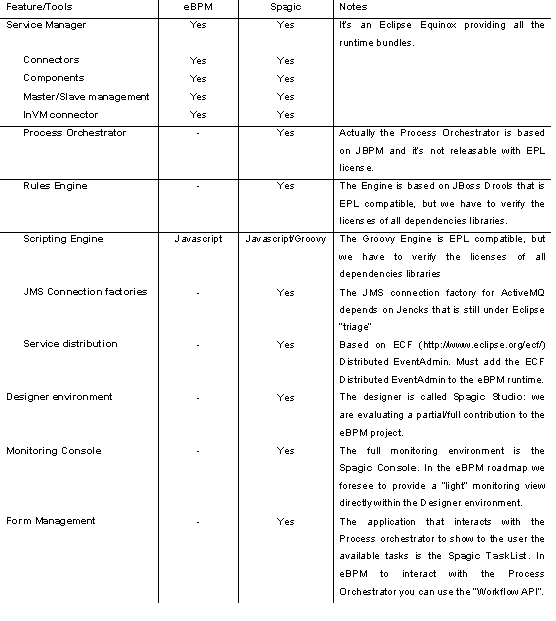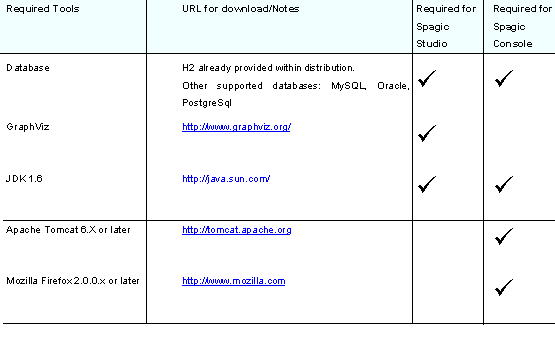Notice: this Wiki will be going read only early in 2024 and edits will no longer be possible. Please see: https://gitlab.eclipse.org/eclipsefdn/helpdesk/-/wikis/Wiki-shutdown-plan for the plan.
Difference between revisions of "Ebpm/Getting Started"
(→Introduction) |
|||
| Line 19: | Line 19: | ||
<p>[[Image:table1.PNG]]</p> | <p>[[Image:table1.PNG]]</p> | ||
| − | == Prova == | + | == == Prova == == |
== Software Requirements == | == Software Requirements == | ||
<p>[[Image:table2.PNG]]</p> | <p>[[Image:table2.PNG]]</p> | ||
Revision as of 11:50, 25 August 2010
Document Goal
The goal of this document is to provide you with an introduction on using eBPM looking at a demo application that should allow you to explore some of the most interesting features of the new platform.
Introduction
eBPM is a project whose goal is proposing an OSGi Enterprise Universal Middleware that enables the development of both single services and complex solutions including orchestration processes, workflows with human activities and features like support of rules engines, registries and multi-node distributions.
In eBPM the atomic units of execution are the services that are exposed to the external world through connectors. These services can be deployed and executed alone or composed within complex processes.
In eBPM, processes are simply “special services” built by composition of OSGi services that are hosted within an OSGi container (actually Equinox).
The services can simply be configured with a connector (also hosted on the OSGi container) like “My Service 4” in the previous figure, or they can be orchestrated in a complex process by a service called “Process Orchestrator” like “My Service 2” and “My Service 3” in the previous figure. Also this kind of complex processes can be configured with a connector, for the activation of the process.
Before proceeding with the guided tour we have to explain what is contained in the eBPM package: eBPM is the result of the contribution to Eclipse of most of the core of an open source project called Spagic (http://spagoworld.com/xwiki/bin/view/Spagic/). The contribution work is still in progress: this means that using eBPM without auxiliary tools is quite complex. For this reason, in this tour we’ll use some complementary tools provided by the original project Spagic and the eBPM runtime provided is the basic one with some additional Spagic bundles.
In the following table we summarize the features that are included in eBPM, and the ones that are included only in Spagic. As you can see, some features will be ported on eBPM, while others will remain on Spagic (that is the eBPM supported version).





